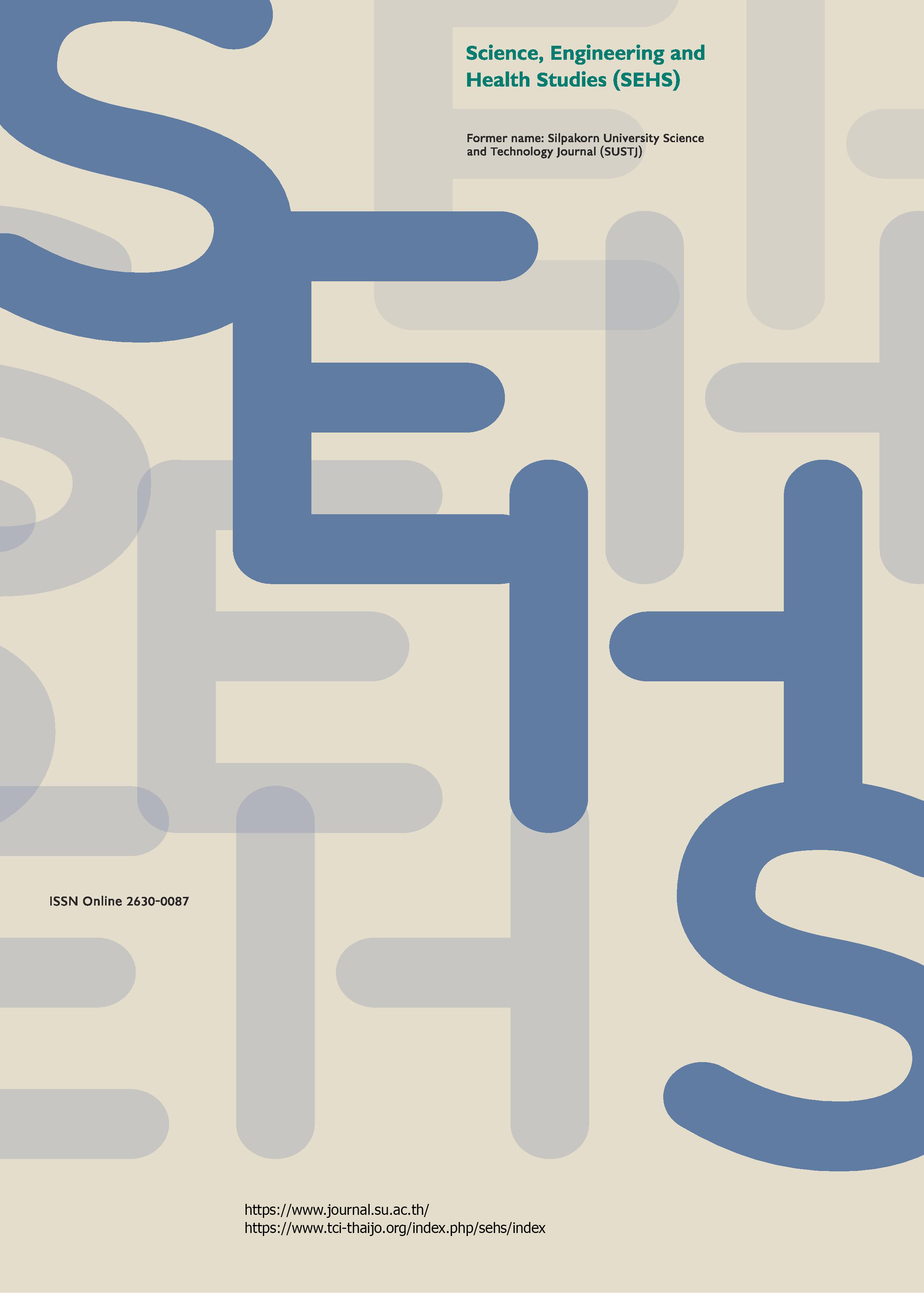Advancing effervescent floating systems: Leveraging multi-layer coatings for enhanced buoyancy and controlled drug release
Main Article Content
Abstract
This study investigated the effectiveness of multi-layer coating techniques in enhancing buoyancy and controlled drug release in effervescent floating systems. By developing a novel multi-layered coated tablet with core effervescent and gas-entrapped layers, we systematically varied the number of spray-coating layers to observe their effects on tablet performance. Increasing the layers reduced the tablet’s time to float to 1.25 min. The rapid buoyancy was attributed to the thinner gas-entrapped layers, which enabled faster interactions between the gas-forming agents and the acidic medium. The floating duration remained consistent at over 8 h across all formulations. An increase in coating layers resulted in delayed drug release, controlled via a zero-order and Higuchi model through the gas-entrapped membrane. These findings highlight that multi-layer coating techniques can improve effervescent floating systems for pharmaceutical applications, providing rapid buoyancy and controlled drug release.
Downloads
Article Details

This work is licensed under a Creative Commons Attribution-NonCommercial-NoDerivatives 4.0 International License.
References
Amrutkar, P. P., Chaudhari, P. D., and Patil, S. B. (2012). Design and in vitro evaluation of multiparticulate floating drug delivery system of zolpidem tartarate. Colloids and Surfaces B: Biointerfaces, 89, 182–187.
Boonyanupap, N., Puttipipatkhachorn, S., Charoenthai, N., and Sungthongjeen, S. (2022). Design and evaluation of double coated floating capsules based on gas formation. Science, Engineering and Health Studies, 16, 22050020.
Das, S., Kaur, S., and Rai, V. K. (2021). Gastro-retentive drug delivery systems: a recent update on clinical pertinence and drug delivery. Drug Delivery and Translational Research, 11(5), 1849–1877.
Dekyndt, B., Verin, J., Neut, C., Siepmann, F., and Siepmann, J. (2015). How to easily provide zero order release of freely soluble drugs from coated pellets. International Journal of Pharmaceutics, 478(1), 31–38.
Huanbutta, K., Sriamornsak, P., Kittanaphon, T., Suwanpitak, K., Klinkesorn, N., and Sangnim, T. (2021). Development of a zero-order kinetics drug release floating tablet with anti–flip-up design fabricated by 3D-printing technique. Journal of Pharmaceutical Investigation, 51(2), 213–222.
Kriangkrai, W., Puttipipatkhachorn, S., Sriamornsak, P., Pongjanyakul, T., and Sungthongjeen, S. (2014). Impact of anti-tacking agents on properties of gas-entrapped membrane and effervescent floating tablets. AAPS PharmSciTech, 15(6), 1357–1369.
Kriangkrai, W., Tangchitkhachon, K., Sriraksa, W., and Sungthongjeen, S. (2023). Multi-layer films prepared by spray coating for effervescent floating tablets. Science & Technology Asia, 28(1), 26–32.
Patil, H., Tiwari, R. V., and Repka, M. A. (2016). Recent advancements in mucoadhesive floating drug delivery systems: A mini-review. Journal of Drug Delivery Science and Technology, 31, 65–71.
Sriamornsak, P., Huanbutta, K., and Sangnim, T. (2022). Recent advances in 3D printing for floating drug delivery platforms. Science, Engineering and Health Studies, 16, 22010001.
Sriamornsak, P., Thirawong, N., Weerapol, Y., Nunthanid, J., and Sungthongjeen, S. (2007). Swelling and erosion of pectin matrix tablets and their impact on drug release behavior. European Journal of Pharmaceutics and Biopharmaceutics, 67(1), 211–219.
Strübing, S., Abboud, T., Contri, R. V., Metz, H., and Mäder, K. (2008). New insights on poly (vinyl acetate)-based coated floating tablets: Characterisation of hydration and CO2 generation by benchtop MRI and its relation to drug release and floating strength. European Journal of Pharmaceutics and Biopharmaceutics, 69(2), 708–717.
Sungthongjeen, S., Paeratakul, O., Limmatvapirat, S., and Puttipipatkhachorn, S. (2006). Preparation and in vitro evaluation of a multiple-unit floating drug delivery system based on gas formation technique. International Journal of Pharmaceutics, 324(2), 136–143.
Sungthongjeen, S., Sriamornsak, P., and Puttipipatkhachorn, S. (2008). Design and evaluation of floating multi-layer coated tablets based on gas formation. European Journal of Pharmaceutics and Biopharmaceutics, 69(1), 255–263.
Tadros, M. I. (2010). Controlled-release effervescent floating matrix tablets of ciprofloxacin hydrochloride: Development, optimization and in vitro–in vivo evaluation in healthy human volunteers. European Journal of Pharmaceutics and Biopharmaceutics, 74(2), 332–339.
Tufail, M., Shah, K. U., Khan, I. U., Khan, K. A., Shah, S. U., Rashid, F., Khan, J., Alshammari, A., Alasmari, A. F., and Riaz, M. S. (2024). Controlled release bilayer floating effervescent and noneffervescent tablets containing levofloxacin and famotidine. International Journal of Polymer Science, 2024(1), 1243321.
Weiss, M., Kriangkrai, W., and Sungthongjeen, S. (2014). An empirical model for dissolution profile and its application to floating dosage forms. European Journal of Pharmaceutical Sciences, 56, 87–91.
Zhang, C., Xu, M., Tao, X., Tang, J., Liu, Z., Zhang, Y., Lin, X., He, H., and Tang, X. (2012). A floating multiparticulate system for ofloxacin based on a multilayer structure: In vitro and in vivo evaluation. International Journal of Pharmaceutics, 430(1–2), 141–150.

